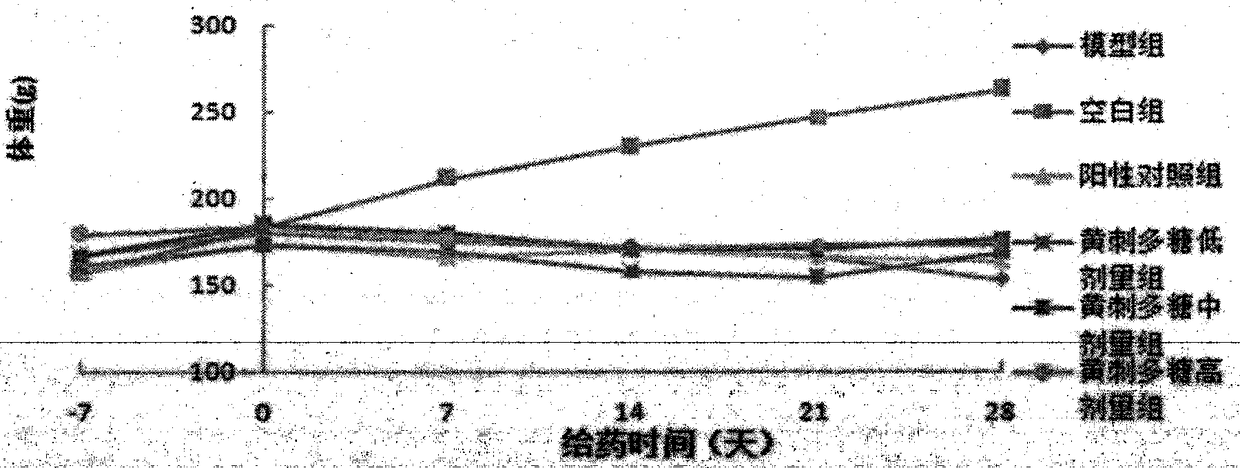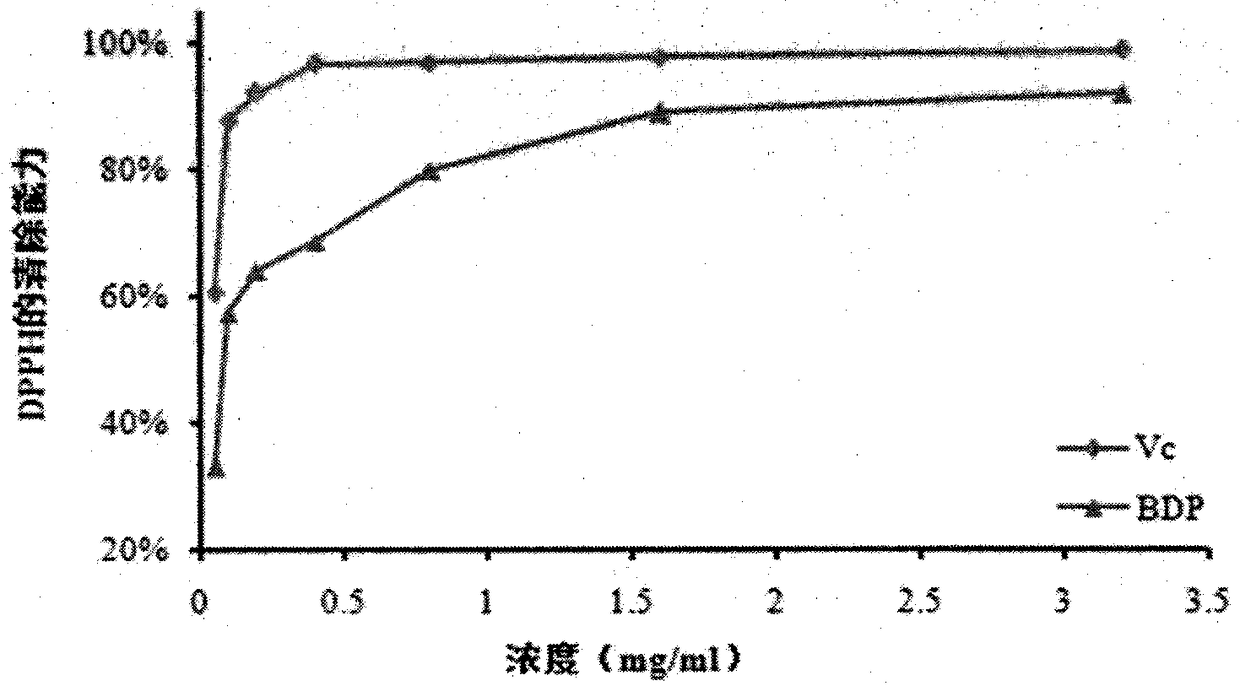Yellow thorn fruit polysaccharide and its preparation method and use
A fruit and polysaccharide technology, applied in the field of yellow thorn fruit polysaccharide and its preparation, can solve problems such as no research report on yellow thorn fruit polysaccharide, and achieve the effects of good blood sugar lowering function, improving lipid metabolism disorder and strong antioxidant activity
- Summary
- Abstract
- Description
- Claims
- Application Information
AI Technical Summary
Problems solved by technology
Method used
Image
Examples
Embodiment 1
[0044] Embodiment 1: the preparation of the polysaccharide of the fruit of japonica
[0045] 1) Degreasing of the fruit of C. japonica: Take 400g of ripe fruit of C. chinensis (i.e., Berberis straight panicle) and dry it, crush it and sieve it; mix the fruit of C. japonica with petroleum ether, extract it by ultrasonic after mixing, and centrifuge to remove the extract and residue Filter, evaporate the petroleum ether to obtain the degreased thorn fruit residue;
[0046] 2) Removal of monosaccharides from the fruit of Citrus japonica: mix the residue of the fruit of Citrus japonica with ethanol, the concentration of ethanol is 70-85% v / v for reflux extraction, centrifuge to remove the extract, filter the residue and evaporate the ethanol to get rid of the ethanol. Monosaccharide yellow thorn fruit residue;
[0047] 3) Extraction of the crude polysaccharide of C. japonica: mixing the residue of the fruit of C. japonica from which monosaccharides have been removed obtained in s...
Embodiment 2
[0050] Embodiment 2: the preparation of the polysaccharide of the fruit of japonica
[0051] 1) Degreasing of the fruit of C. japonica: take 400 g of ripe fruit of C. chinensis (i.e. Berberis straight panicle) and dry it, crush it and sieve it; mix the fruit of C. japonica with petroleum ether, extract by refluxing, centrifuge to remove the extract, filter the residue, Evaporate the sherwood oil to obtain the degreasing fruit residue;
[0052] 2) Removal of simple sugars from the fruit of Citrus japonica: mix the residue of the fruit of Citrus japonica with ethanol, the ethanol concentration is 70-85% v / v, ultrasonically extract, centrifuge to remove the extract, filter the residue and evaporate the ethanol to obtain Residue of removing monosugar thorn fruit;
[0053] 3) Extraction of the crude polysaccharide of C. japonica: mixing the residue of the fruit of C. japonica from which monosaccharides have been removed obtained in step 2) with pure water, extracting by warm soaki...
Embodiment 3
[0056] Embodiment 3: the preparation of the polysaccharide of the fruit of japonica
[0057] 1) Degreasing of the fruit of C. japonica: take 400 g of mature fruit of C. chinensis (i.e. Berberis straight panicle) and dry it, crush it and sieve it; mix the fruit of C. japonica with petroleum ether, reflow and extract after ultrasonication, and remove the extract by centrifugation. The residue is filtered, and the petroleum ether is evaporated to obtain the residue of the degreased thorn fruit;
[0058] 2) Removal of simple sugars from the fruit of Citrus japonica: mix the residue of the fruit of Citrus japonica with ethanol, the ethanol concentration is 70-85% v / v, ultrasonically extract, centrifuge to remove the extract, filter the residue and evaporate the ethanol to obtain Residue of removing monosugar thorn fruit;
[0059] 3) Extraction of the crude polysaccharide of C. japonica: mixing the residue of the fruit of C. japonica from which monosaccharides have been removed obt...
PUM
| Property | Measurement | Unit |
|---|---|---|
| absorbance | aaaaa | aaaaa |
Abstract
Description
Claims
Application Information
 Login to View More
Login to View More - R&D
- Intellectual Property
- Life Sciences
- Materials
- Tech Scout
- Unparalleled Data Quality
- Higher Quality Content
- 60% Fewer Hallucinations
Browse by: Latest US Patents, China's latest patents, Technical Efficacy Thesaurus, Application Domain, Technology Topic, Popular Technical Reports.
© 2025 PatSnap. All rights reserved.Legal|Privacy policy|Modern Slavery Act Transparency Statement|Sitemap|About US| Contact US: help@patsnap.com



